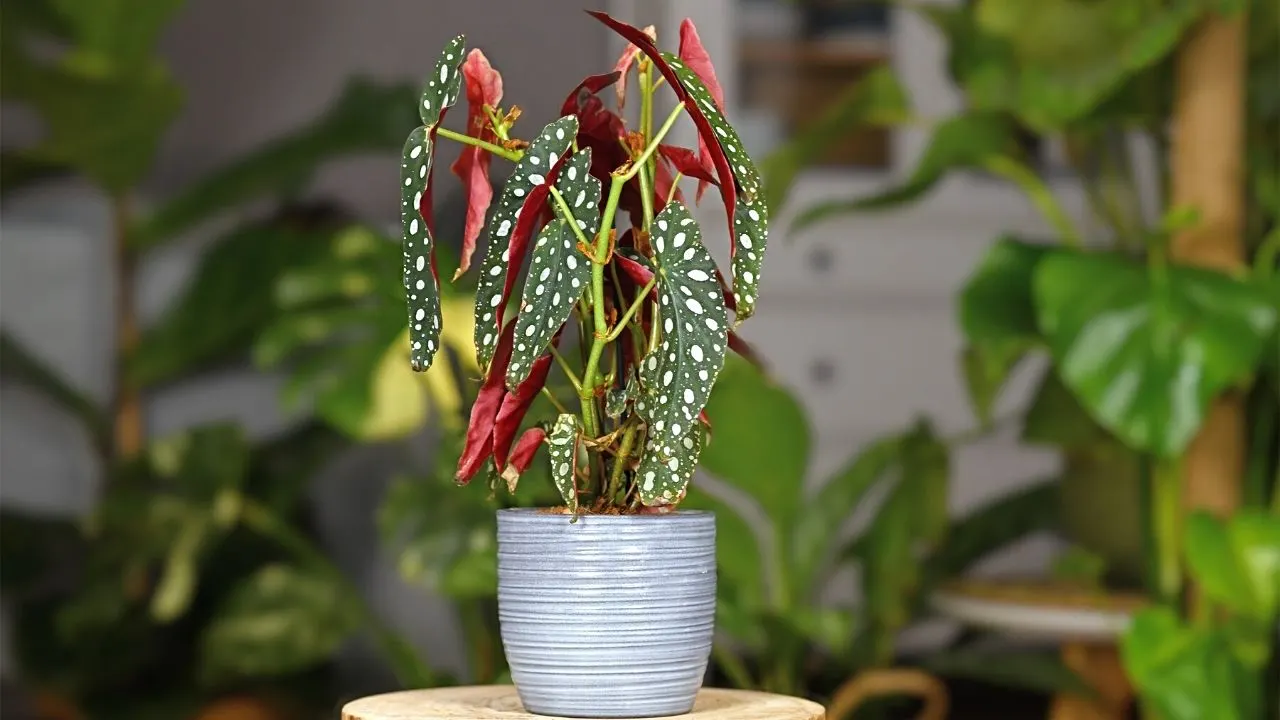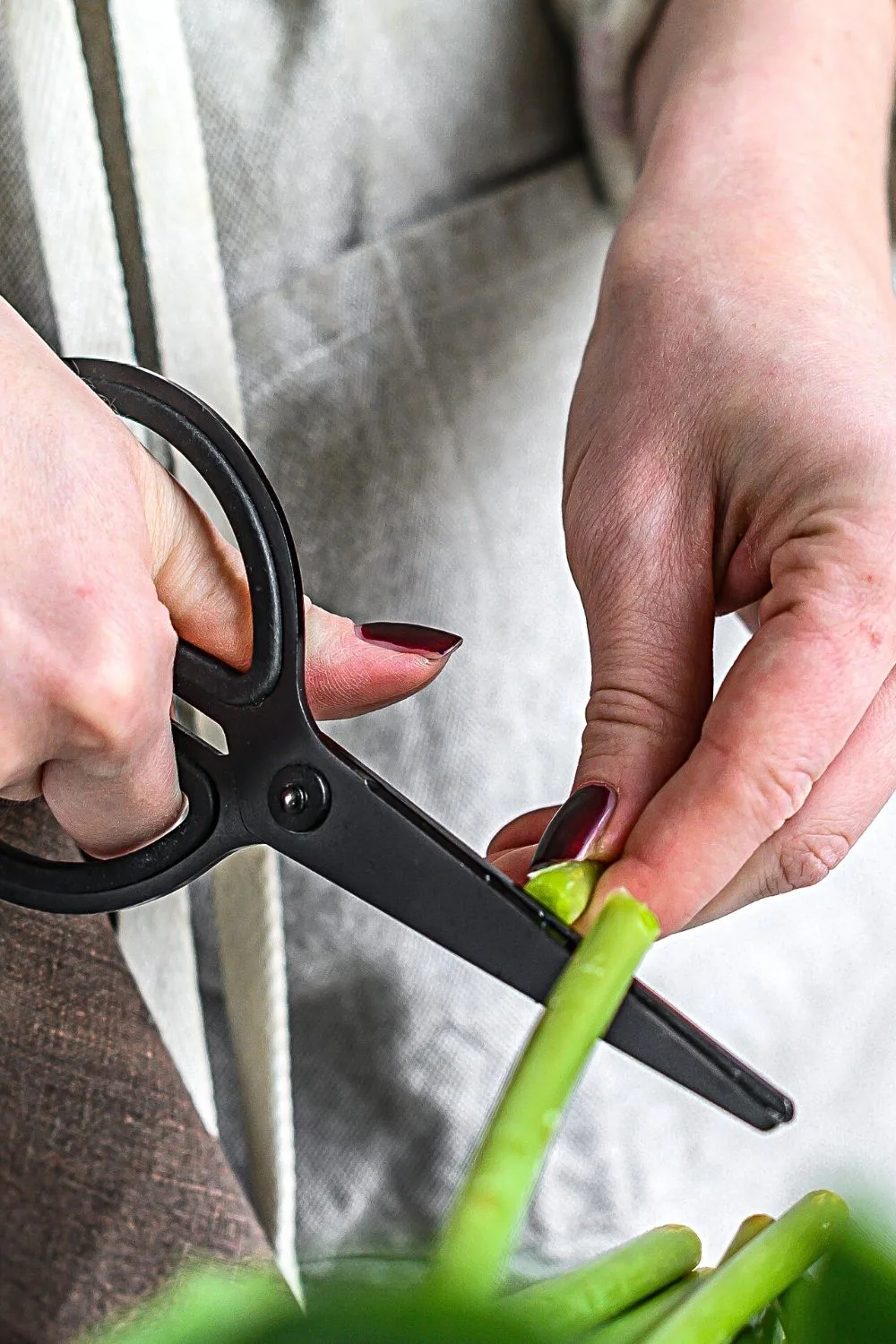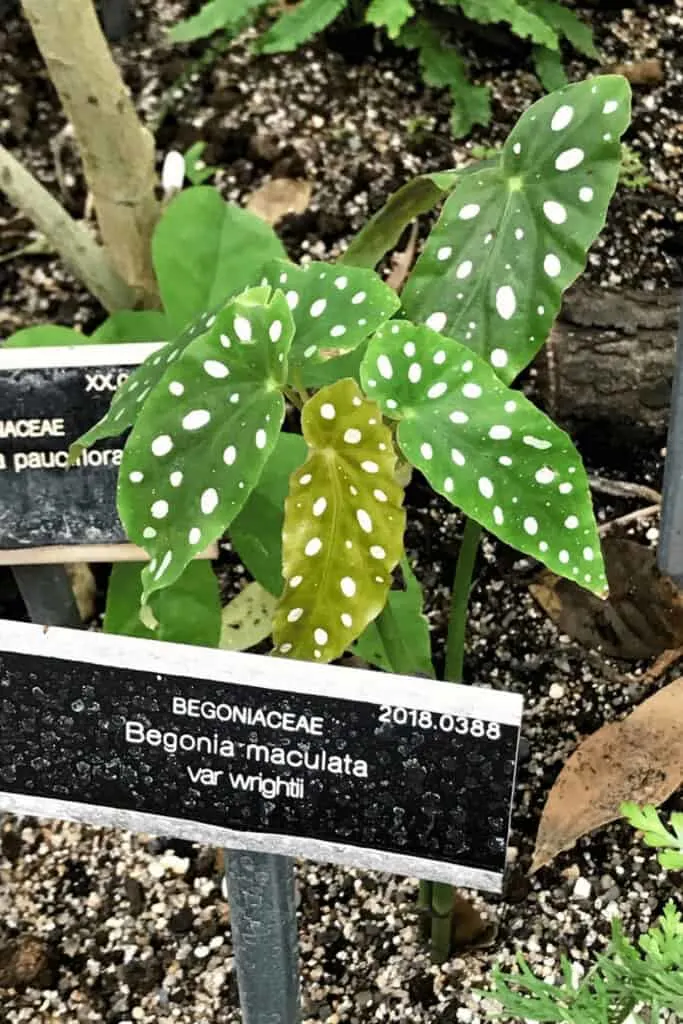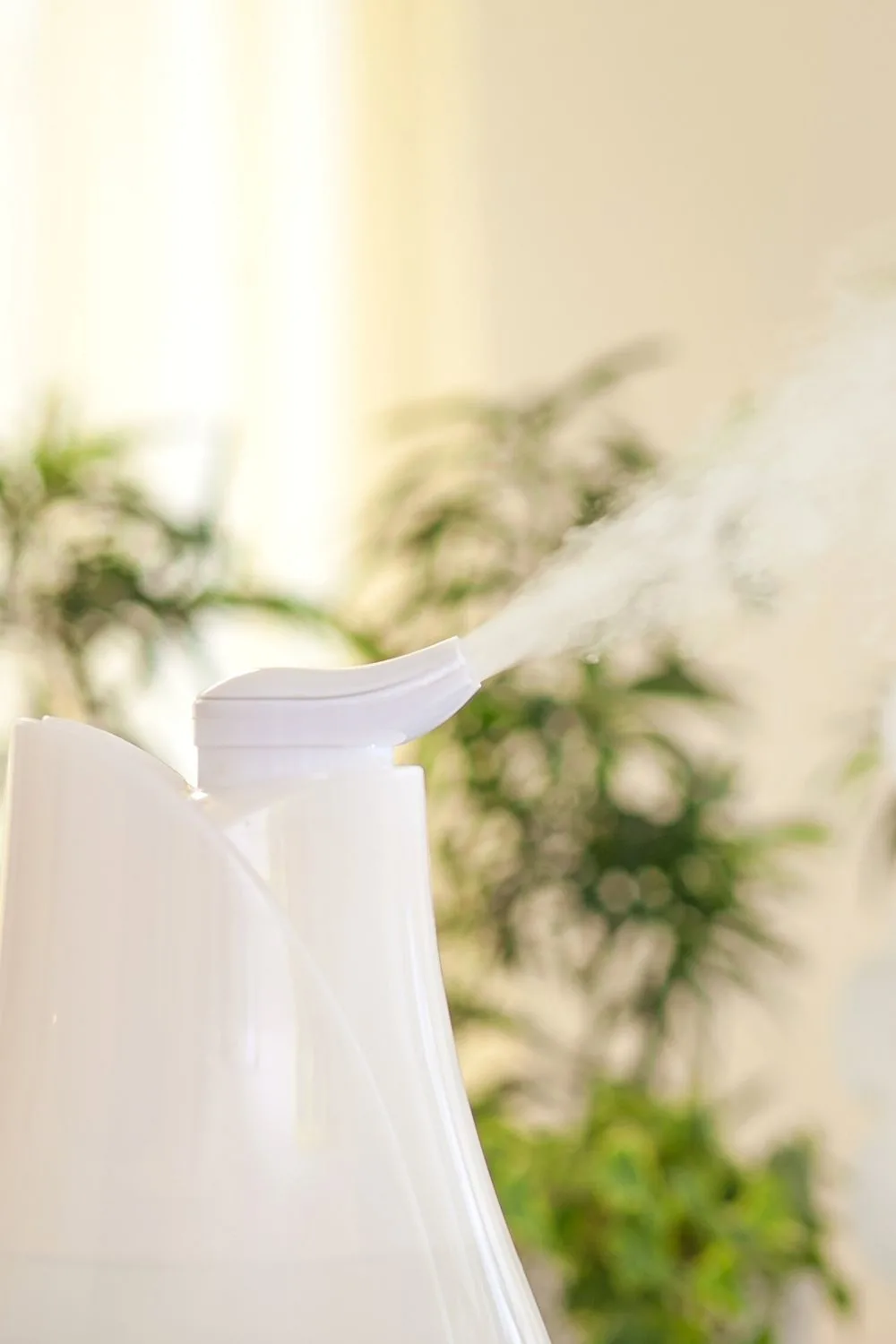In this article, I will discuss different methods to propagate Begonia maculata.
Begonia maculata, aka the Polka Dot Begonia, is famous for its polka dot leaves, according to RHS. It is a colorful member of the Begonia genus and the Begoniaceae family.
It is one of my favorite houseplants. But it is not a plant that is easy to care for. That is why propagation is so important. If one dies, you have more. Here are my best tips to propagate this Angel Wing Begonia.
Table of Contents
Begonia maculata Care Takeaways
| Species | Begonia maculata var. wightii |
| Synonyms | Polka Dot Begonia, Polka Dot Plant, Angel Wing Begonia, Begonia maculata wightii, Trout begonia, Clown Begonia |
| Family | Begoniaceae |
| Genus | Begonia |
| Growth | Bushy growth |
| Height | 2 feet |
| Width | 0.3 feet |
| Soil | Well-draining sand, clay, and loamy soil |
| Watering | Water every 5 to 7 days |
| Light | Bright indirect |
| Temperature | 65 to 86°F |
| Humidity | 60-80% |
| Fertilizer | Fertilize 2 times per month |
| Propagation | Stem cuttings, seeds |
| Toxicity | Toxic to pets such as cats and dogs as it contains soluble calcium oxalates. Ingestion can cause irritation and vomiting. |
How to Propagate Begonia Maculata
A Begonia Maculata can be propagated from a stem cutting, a tip cutting, a rhizome, a leaf, or from seeds. An easy way to propagate is to use a clean pruning shear, take a cutting and place the stem- or leaf cutting in a jar of room-temperature water. Once the stem cutting grows roots, transfer it to a pot.

Begonia Propagation Video
Different Methods How to Propagate a Polka Dot Begonia
Propagating Begonia maculata in Water
Step 1: Sterilize your Tools
Before moving on to any further step of propagating a plant, you must ensure that all your gardening tools are properly cleaned and sterilized.

If not, your plant may wilt or show discoloration of leaves over time.
Cleaning and sterilizing your scissors, knives, and other gardening accessories may seem unnecessary and cumbersome, but believe me, it is one of the best things you could do to give your plant a long and healthy life.
Step 2: Take a Stem Cutting
To use water as a medium for propagating Begonia Maculata, use a stem or leaf cutting of a Begonia maculata.
Cut one of the stems at an angle using clean, sharpened scissors. Otherwise, you can also use pruned cuttings if you have them.

It is certainly not recommended to cut your stems unnecessarily.
Ensuring that you have at least one small node branching from your stem is vital. Or, one or two small leaves will also do great for your propagation.
With this particular plant, it is not necessary that you cut below the node.
You can cut the stem anywhere you like, considering that you have a reasonable height of the branch to propagate.
While cutting below the node is always the best idea because leaves usually cluster around the nodes; leaves grow almost everywhere in this plant.
Therefore, you do not have to worry about cutting the stem precisely below the nodes.
Step 3: Place the Cutting in a Jar
Once you have the pruned or the deliberate stem cutting, the next step is to fill a large jar with water.
You do not want to use extremely cold or extremely hot water as both of these will delay and ultimately stunt the growth of this newly propagating plant.
Use room temperature water for best results.
Put the jar in a room with bright yet indirect light. Ensure that the small leaves attached to your stem cutting are not immersed in water.
If they keep falling back into the water, you can use two long sticks to keep the leaves above the water’s surface.
Changing the water every four days is strongly advised to prevent dirt and bacterial growth.
Step 4: Transfer your Cuttings to a Pot
You will slowly and gradually see new roots sprouting from your stem, cutting within a few weeks. Wait until these roots are 2-3 inches long.
If you take the cutting out of water too soon, your plant will never grow at its optimum level in its new pot.
Once the roots are at least three inches long, carefully remove the cutting and place it in a moderately sized pot with a rich potting mix.
Check out the best soil for Begonias to ensure that your Begonia Maculata thrives after you plant it.
Step 5: Give Time to Your Plant
Your plant must have the space and strength in its new pot.
Ensure you water your Begonia Maculata on time, keep it in indirect bright light, and clean the fresh leaves so the plant is not prone to infection.
Keep experimenting with the plant’s location until you find the sweet spot where your plant shows optimal signs of growth.

Propagating Begonia maculata in Potting Mix
Step 1: Take a Stem Cutting
Using the same technique as above, cut the stem using a clean pair of scissors or a pruned cutting so you do not have to waste more of your branches.
Step 2: Place your Cutting in a Rich Potting Mix
Unlike the first method, where you place your cutting in a jar full of room temperature water, use a rich and moistened potting mix this time.
Afterward, put the plant pot in a location where it gets plenty of indirect light and gives it ample time to grow and sprout new roots.
Then, wait a few more weeks before fresh leaves from the stem rise above the soil.
Make sure the potting mix you are using for your new plant is rich in organic matter so that it has all the essential nutrients it needs to grow.
Step 3: Ensure Proper Humidity
You can use many techniques to ensure the right humidity levels for your plant.
One of them is simply buying an inexpensive humidifier to set the desired moisture level for your plant.

If you are unwilling to accept a humidifier, you can cover your plant with a clear plastic bag and seal it slightly over the edges to keep humidity intact.
You can always remove the cover every once in a while to let your plant breathe properly and ensure optimum airflow.
Step 4: Do a Resistance Check
After a few weeks, it is time to check if your newly built leaves and stems have built resistance.
This will be a test to check whether they have grown appropriately or are still stunted. Tug the stem in your direction.
If you feel that the branch is resisting and pulling itself towards the soil, the plant has built deep roots inside the ground and is now fully intact.
Start treating your cutting like a typical plant once its root system’s developed.
Propagating Begonia Maculata from Seeds
Step 1: Bury the Seeds under the Soil
Another way of propagating Begonia Maculata or Polka dot Begonia is by simply using seeds bought from a supermarket.
While the quality of the seeds may not always be the best, it is highly recommended not to compromise on the quality of your potting mix for your plant.
Step 2: Water the Plant Regularly
Since your seeds will be put directly in this potting mix, the mixture should have enough nutrients to grow efficiently.
Two essential minerals to look for in a potting mix are phosphorus and magnesium.
Spread the seeds evenly on your potting mixture before covering them with another generous layer of potting mix.
Keep watering the plant regularly and keep the pot in indirect light indoors for the first few days before moving them outside if you wish to do so.
After three weeks of regular watering and ensuring proper sunlight, small stems rise upward.
Frequently Asked Questions About How to Propagate Begonia Maculata
Can I give direct light to my Begonia maculata?
Begonia maculata thrives in bright but indirect light. If it is exposed to direct sunlight for an extended period, it will eventually burn the leaves and result in discoloration.
Is it a good idea to propagate Begonia maculata through seeds?
Begonia maculata thrives in bright but indirect light. If it is exposed to direct sunlight for an extended period, it will eventually burn the leaves and result in discoloration.
Can you propagate Begonia maculata from a leaf?
You can propagate Begonia maculata from a leaf. It can be propagated from seeds, stem cuttings, and leaf cuttings.
Conclusion On Angel Wing Begonia Propagation
Easily propagate Begonia Maculata from stem cuttings, tip cuttings, rhizomes, leaves, or seeds. Use clean pruning shears to take a cutting, then place it in room-temperature water. After the cutting develops roots, transfer it to a pot for successful growth and propagation.

Daniel has been a plant enthusiast for over 20 years. He owns hundreds of houseplants and prepares for the chili growing seasons yearly with great anticipation. His favorite plants are plant species in the Araceae family, such as Monstera, Philodendron, and Anthurium. He also loves gardening and is growing hot peppers, tomatoes, and many more vegetables.


